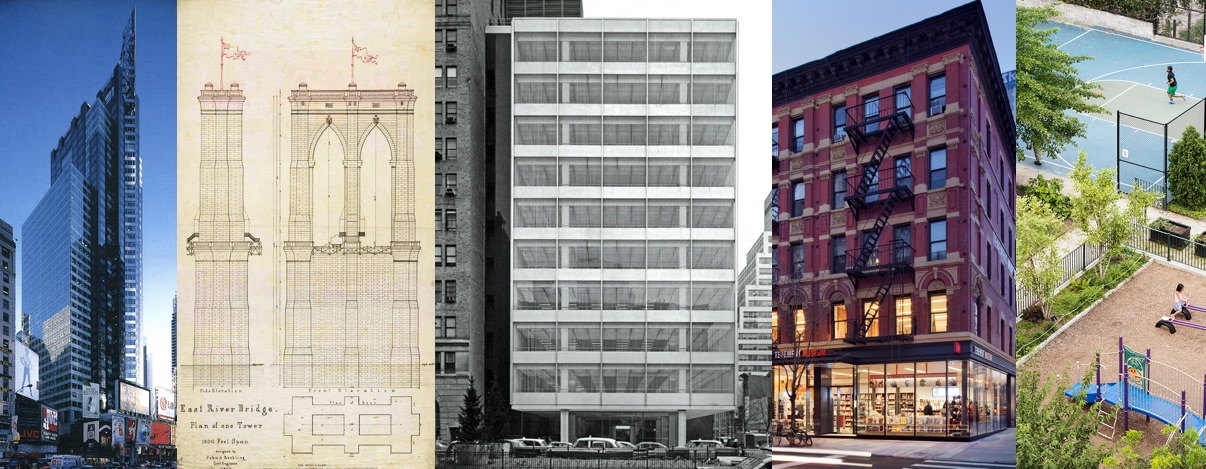100 Works Designed and Constructed by Women: Built By Women New York City
In 2014, supported by grants from the New York Building Foundation and the New York Council for the Humanities, the Beverly Willis Architecture Foundation began a project to identify buildings, structures, and built environments in New York City that are designed or constructed by women. The criteria:
The structure or built environment must have a woman who was directly responsible for leading the design (architecture, engineering, or landscape) or who led the construction, either from the development or construction management team. Projects must be completed or have broken ground and located in New York City.
A jury of eight leading women in architecture, landscape, engineering, design, and planning identified 100 civic, commercial, cultural, institutional, landscape, mixed-use, residential, transportation, and urban design projects, and in December, they published Built By Women New York City (BxW NYC). This is a wonderful celebration of the women who have made New York City what it is today, and the foundation is planning a series of public events to draw greater attention to these important works:
Over the next year, walking tours, interactive maps, and other educational materials will be developed to highlight women’s contributions to the built environment and BWAF will host local events to publicize the spaces.
One of the better-known projects on the list is the Brooklyn Bridge. Emily Warren Roebling served as chief engineer for eleven years, and oversaw the bridge’s successful completion in 1883. She did so after Washington Roebling, her husband and the bridge project’s second chief engineer, was sidelined by the debilitating effects of decompression sickness from working in the deep caissons used to dig the tower foundations.
More recent projects include the 44-story Bertelsmann Building at 1540 Broadway, designed by Audrey Matlock. A profile in Residential Architect notes that her work has been the subject of comments that could be construed as sexist:
A couple of years ago, a well-known architecture critic commented that Matlock’s work has blood and guts; another defined it as macho. “I thought it was amusing. They were saying it doesn’t look like a girl’s work should look,” she says. “There’s a real satisfaction I get from designing buildings that are what they say they are. When the structure starts making sense, it looks right, too.”
The profile also notes that Matlock often works in a ground-floor studio visible from the street:
A native of Olean, N.Y., Matlock lives in Tribeca, a few blocks from her four-story storefront studio on Broadway. The bookshelf-lined first floor has a large work table inside the front door, and Matlock looks up every now and then to return a wave from someone on the street. “People see us every day because we’re on their route,” she says. “We’ve gotten work that way.”
Image Credits: 1540 Broadway: Audrey Matlock Architect; Brooklyn Bridge Tower: National Archives; Pepsi-Cola World Headquarters: Ezra Stoller/SOM; Tenement Museum: Tenement Musem; 103rd Street Community Garden: Scape/Landscape Architecture PLLC



